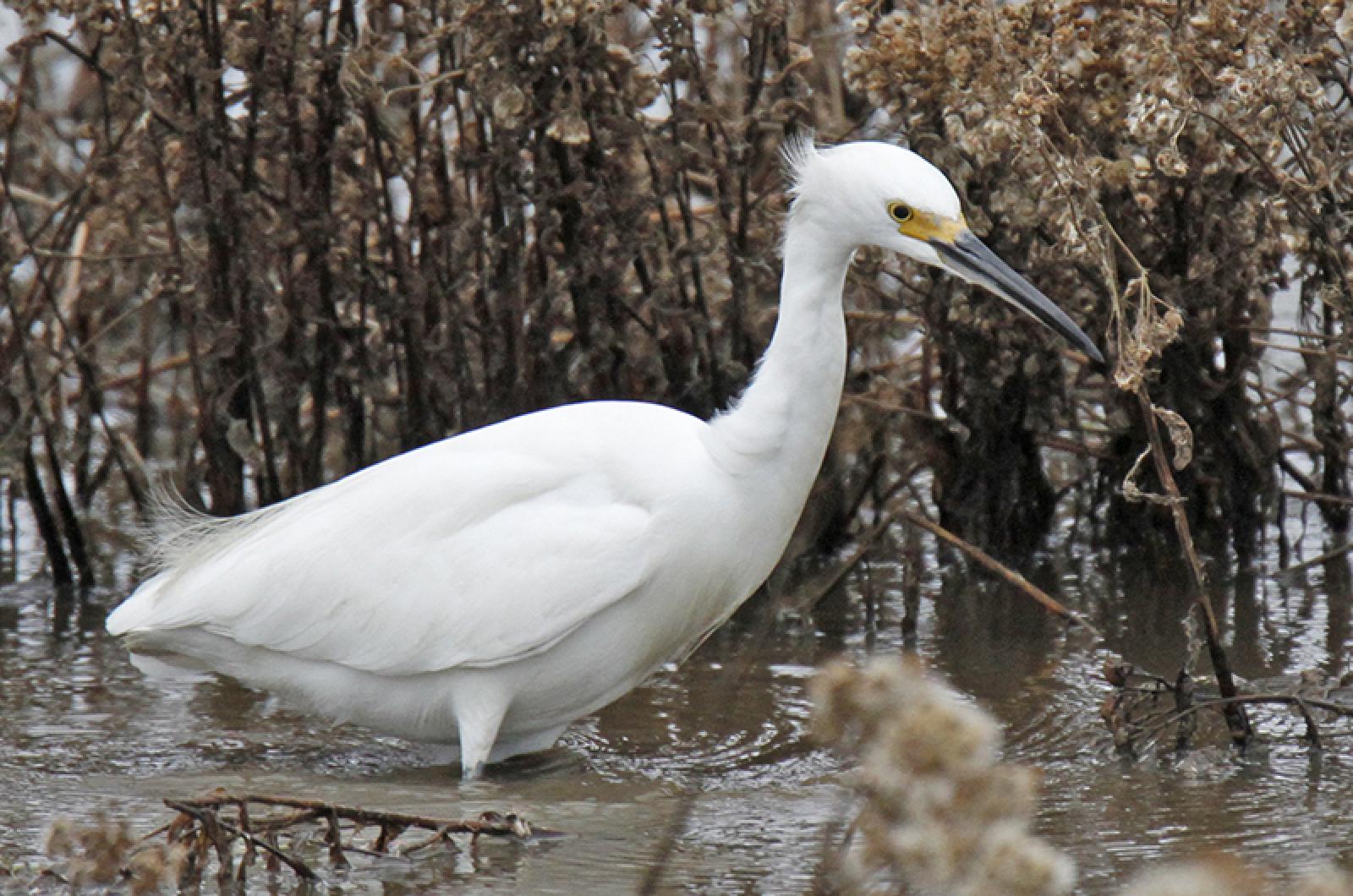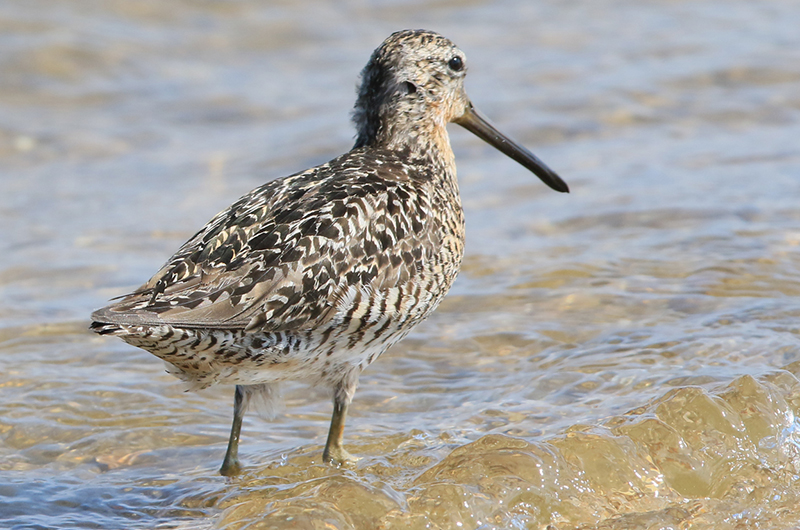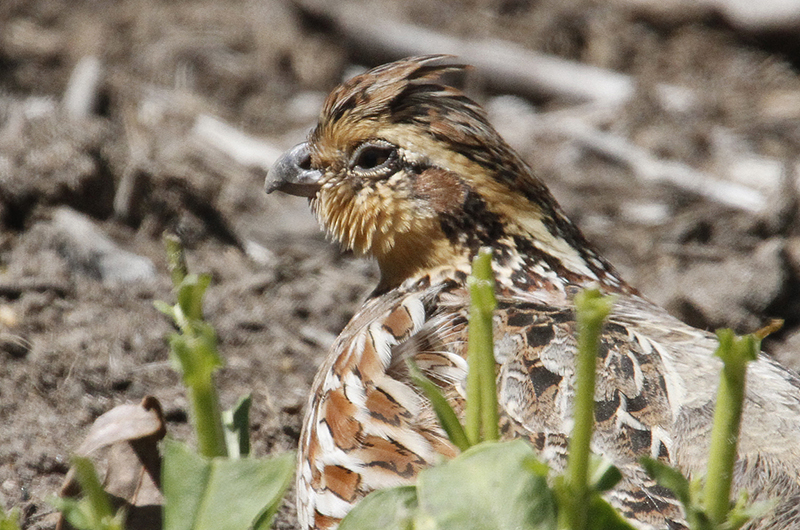A common complaint of springtime birders is warbler neck, a soreness in the neck from looking overhead at small insect-eating birds in the treetops during April and May. The warbler migration is picking up steam, with the first pine warbler sightings reported below and many more to come. It will peak sometime between mid-April and mid-May. Finding and identifying these feathered friends means a lot of looking upward into the canopy.
While we think there are a lot of bugs at ground level, there are even more higher up in the trees, which is why the warblers are up there. Meg Lowman, an ecologist studying tree health in the 1990s, was the first to discover the abundance of these arboreal bugs; she was also the first person to study herbivory (insects eating leaves) by climbing into the canopy rather than the traditional and easier ground-based studies. She calls herself an arbornaut as she explores woodland canopies around the world.
So, warbler neck is the result of the extreme abundance of insects in the canopy of woodlands; birds forage where food is abundant and easy to find.
The most unusual sighting this week is from Gus Ben David and Phil Stanton of a common redpoll. This is one of the occasionally irruptive winter finches, but this winter most of them did not migrate this far south. There have been only a handful of sightings on Nantucket and elsewhere in southeastern Massachusetts this winter. On April 3 a different-looking bird flew up to a feeder and perched on the far side of it, showing only its tail; fortunately, it popped up to the top of the feeder briefly so both Gus Ben David and Phil Stanton could get good looks before it flew off. It has not been seen since. Also remarkable is the first of the year sighting of migrant pine warblers. On April 3, Gus Ben David and Phil Stanton saw a warbler that was very bright yellow at his feeder - a male pine warbler. The next day, Matt Pelikan heard two pine warblers singing at the BiodiversityWorks headquarters. This species overwinters in small numbers but those birds would not yet be singing or in their bright yellow breeding plumage.
Two other new species for the year are snowy egret and short-billed dowitcher. The snowy was spotted at Farm Pond by John Nelson while the dowitcher was found by Bob Shriber in the West Basin, along with three greater yellowlegs. These species were all observed on April 3.
Last week this column pointed out that female red-winged blackbirds had not yet been reported. Well, it is April now — more than a month after the first male red-wings returned — and Tony Lima finally found the first female red-winged blackbird at Farm Pond, also on April 3.
More phoebes and tree swallows have arrived. Tim Leland spotted a phoebe at Wasque on April 2 and Catherine Deese reports the phoebe that nests under her porch every year returned on April 4. Pieter Pil found one tree swallow at Felix Neck on April 1; Luanne Johnson and Margaret Curtin found nine tree swallows at Felix Neck on April 3; and Matthew Born spotted two tree swallows in Aquinnah on April 4. On the waterfowl front, Matthew Born found one common eider, 15 black scoter, 30 long-tailed ducks, 60
bufflehead, five red-breasted mergansers, six horned grebe and 60 gannets in Aquinnah on April 1. (The latter two species are not waterfowl.) That same day Robin Lloyd spotted a dozen buffleheads and 30 or so ring-necked ducks at Cranberry Acres. On April 3, Jeff Bernier spotted three blue-winged teal at Sweetened Water Preserve and Margaret Curtin found four mute swans, two black ducks, 16 buffleheads and 18 red-breasted mergansers, as well as a great blue heron, 15 black-crowned night-herons, one kingfisher and one white-throated sparrow at the Oak Bluffs pumping station.
Lingering species were found when Bridget Dunnigan and Sea Williams visited the northeast corner of the state forest on April 2 and found three red-breasted nuthatches and seven dark-eyed juncos. The next day, Holly Mercier reports her first of the year yellow-rumped warbler at her feeder as well as a bunch of brown-headed cowbirds.
Tim Leland reports one northern bobwhite at Wasque on April 2. This native tick-eating species seems to be making a comeback in recent years, although sighting have been scarce this winter. Hopefully there will be more sightings when they become more vocal during the breeding season.
Finally, Gus Ben David reports a single fish crow came to his yard on April 4 and was getting suet out of the feeder. He put out some other treats, which were quickly consumed. I believe this is the first report of a fish crow at a feeder although I have often observed them dumpster diving.
Please email your sightings to birds@mvgazette.com
Robert Culbert is an ecological consultant with Nature Watch LLC living in Vineyard Haven.








Comments
Comment policy »